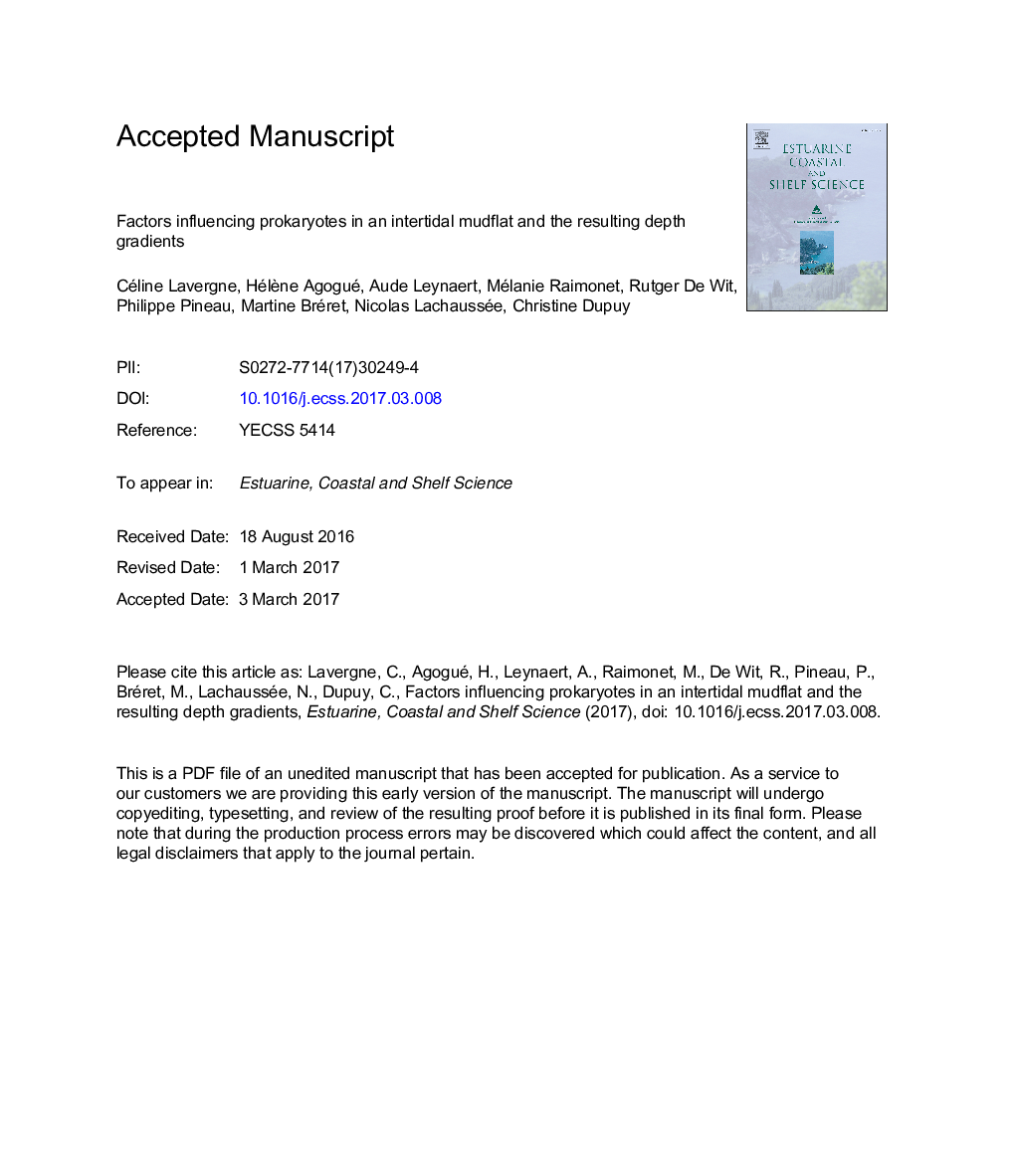| Article ID | Journal | Published Year | Pages | File Type |
|---|---|---|---|---|
| 5765195 | Estuarine, Coastal and Shelf Science | 2017 | 32 Pages |
Abstract
Intertidal mudflats are rich and fluctuating systems in which the upper 20Â cm support a high diversity and density of microorganisms that ensure diversified roles. The depth profiles of microbial abundances and activities were measured in an intertidal mudflat (Marennes-Oléron Bay, SW France) at centimeter-scale resolution (0-10Â cm below the sediment surface). The aim of the study was to detect microbial stratification patterns within the sediments and the way in which this stratification is shaped by environmental drivers. Two sampling dates, i.e. one in summer and another in winter, were compared. The highest activities of the microbial communities were observed in July in the surface layers (0-1Â cm), with a strong decrease of activities with depth. In contrast, in February, low microbial bulk activities were recorded throughout the sediment. In general, prokaryotic abundances and activities were significantly correlated. Variation partitioning analysis suggested a low impact of predation and a mainly bottom-up-controlled prokaryotic community. Hence, in the top layer from the surface to 1-3.5Â cm depth, microbial communities were mainly affected by physicochemical variables (i.e. salinity, phosphate and silicate concentrations). Below this zone and at least to 10Â cm depth, environmental variables were more stable and prokaryotic activities were low. The transition zone between both layers probably represents a rather smooth gradient (environmental ecocline). The results of our study provide a better understanding of the complex interactions between micro-organisms and their environment in a fluctuating ecosystem such as an intertidal mudflat.
Related Topics
Physical Sciences and Engineering
Earth and Planetary Sciences
Geology
Authors
Céline Lavergne, Hélène Agogué, Aude Leynaert, Mélanie Raimonet, Rutger De Wit, Philippe Pineau, Martine Bréret, Nicolas Lachaussée, Christine Dupuy,
